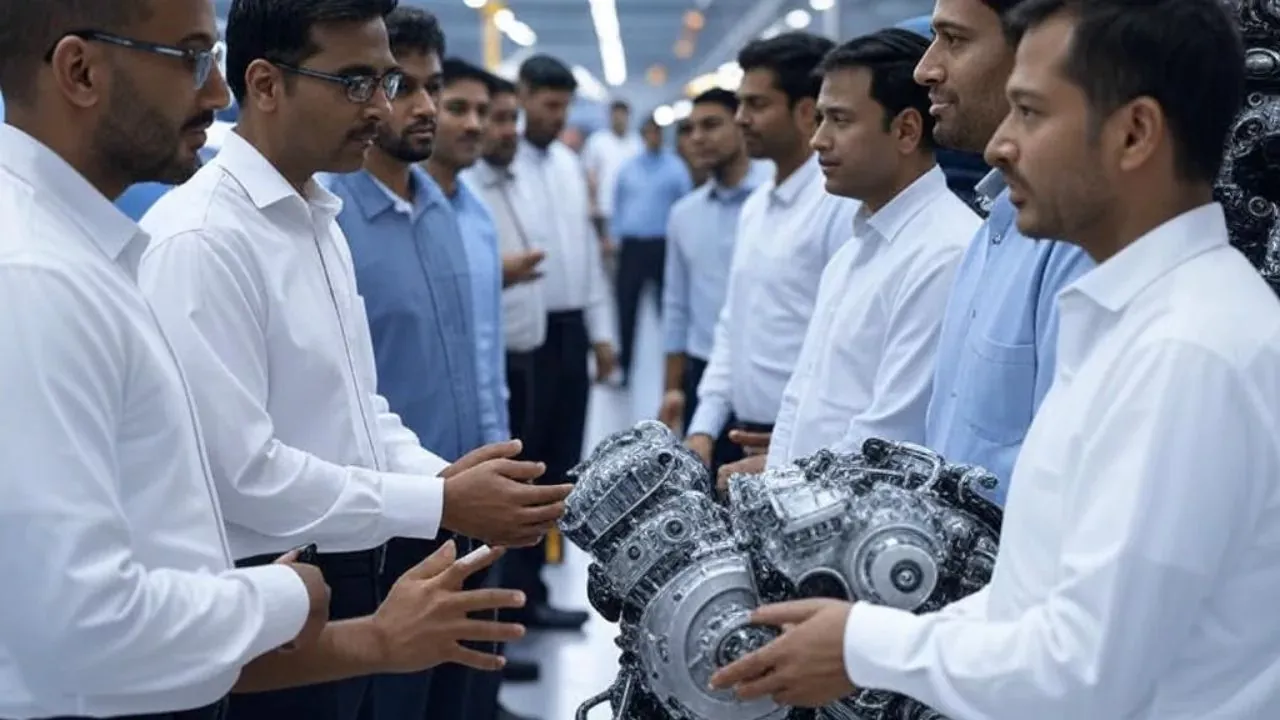New Delhi, April 25, 2025 – A new study by Imperial College London has raised alarms about significant financial risks facing Indian automakers as the country accelerates its transition to electric vehicles (EVs). The report underscores the urgent need for traditional manufacturers to adapt to the rapidly evolving EV landscape and highlights the critical role of a modernized power grid in ensuring a sustainable shift.
The study, titled “Navigating the Electric Vehicle Transition: Challenges for India’s Automotive Sector,” points out that India’s ambitious target of achieving 30% EV penetration in vehicle sales by 2030 is putting pressure on automakers reliant on internal combustion engine (ICE) vehicles. With EVs currently holding just 3% of passenger car sales in FY25, the transition poses both operational and financial challenges for legacy manufacturers like Maruti Suzuki, Tata Motors, and Mahindra & Mahindra.
Key Financial Risks
The Imperial College study identifies several risks:
- Stranded Assets: Investments in ICE manufacturing facilities and supply chains could become obsolete as EV adoption grows, leading to significant write-offs.
- High Capital Costs: Developing EV platforms, battery technologies, and charging infrastructure requires substantial upfront investments, straining balance sheets.
- Revenue Disruptions: Slower-than-expected EV sales growth, coupled with declining ICE vehicle demand, could squeeze profit margins, especially for companies slow to pivot.
- Supply Chain Vulnerabilities: Dependence on imported EV components, particularly batteries, exposes automakers to global price volatility and geopolitical risks.
The report also warns that India’s power grid, heavily reliant on coal, is ill-equipped to handle the increased electricity demand from widespread EV adoption. Without significant upgrades to renewable energy capacity and smart grid technologies, automakers could face supply constraints and higher operational costs.
Adaptation Challenges for Traditional Manufacturers
Traditional automakers must overhaul their business models to stay competitive, the study argues. Unlike new entrants like Ola Electric and Ather Energy, which are EV-native, legacy manufacturers face the dual challenge of maintaining ICE sales while scaling EV production. The collapse of BluSmart’s operations earlier this year, which left Tata Motors and Citroën with 9,000 undelivered vehicles, serves as a cautionary tale of the volatility in the EV ecosystem.
“Indian automakers need to rethink their strategies,” said Dr. Anjali Sharma, lead author of the study. “This includes investing in local battery production, forming partnerships for charging infrastructure, and upskilling workforces for EV manufacturing. Those who fail to adapt risk being left behind.”
Government Role and Policy Support
The study praises government initiatives like the PM E-DRIVE scheme and reduced GST on EVs (from 12% to 5%) but calls for more targeted support. Recommendations include subsidies for domestic battery manufacturing, tax incentives for grid modernization, and policies to ease the financial burden of transitioning legacy plants to EV production.
India’s EV sales hit 20 lakh units in FY25, driven by two-wheelers and three-wheelers, but the passenger car segment lags. The government’s push to phase out petrol two-wheelers in Delhi by August 2026 and CNG three-wheelers by August 2025 signals a strong policy commitment, but it also intensifies pressure on automakers to act swiftly.
Industry Reactions
Industry leaders acknowledged the challenges but expressed cautious optimism. “The transition is tough, but it’s also an opportunity to innovate,” said a spokesperson for Mahindra & Mahindra, which has ramped up its EV portfolio with models like the XUV400. Tata Motors, a leader in India’s EV market, emphasized its investments in battery research and charging networks as steps to mitigate risks.
However, smaller manufacturers and suppliers expressed concerns about their ability to finance the shift. “The government needs to step in with low-cost loans or grants for MSMEs in the auto supply chain,” said Rajesh Gupta, president of the Auto Components Manufacturers Association.
Looking Ahead
The Imperial College study concludes that India’s EV transition is a high-stakes opportunity for automakers but requires coordinated action. Modernizing the power grid, scaling local EV component production, and supporting traditional manufacturers through policy interventions will be critical to minimizing financial risks and ensuring a smooth transition.
As India’s EV market continues to grow, the choices made by automakers and policymakers in the coming years will determine whether the country can achieve its 2030 vision while safeguarding its automotive industry’s economic contributions.

